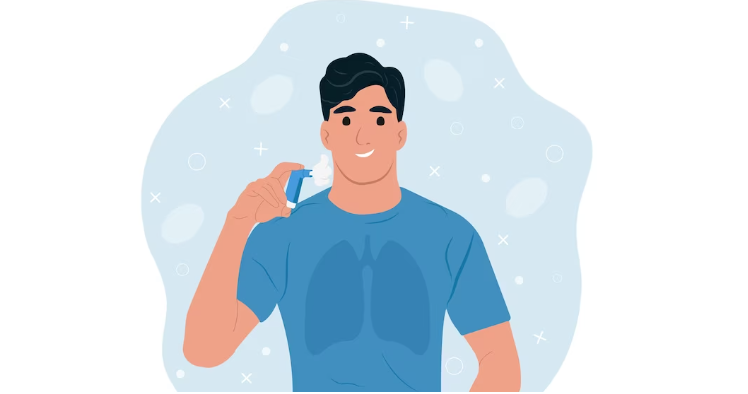What are The Benefits and Limitations of Inhalers and Nebulizers

Nebulizers and inhalers, which were introduced to the world in the 1930s and 1950s, respectively, were precisely the inventions that patients with lung conditions like asthma had long wished for. This meant that patients could now easily inhale the medication that was required to manage and treat their illnesses. Nebulizers were the first to be invented and were certainly appreciated, but you couldn’t carry one about with you to work or school. As a result, when inhalers were introduced, they swiftly replaced other options as the preferred form of respiratory treatment. So, before looking at the same for nebulizers, let’s look into the benefits and drawbacks of the preferred inhaler.
The Benefits of Inhalers: –
- Allow for the quick delivery of medications to the airways, which is appropriate for COPD and asthma medications.
- Lightweight, small and easily portable in a pocket, purse or suitcase.
- Quite simple to use when given the right instructions.
The Disadvantage of Inhalers: –
- Small, portable, and quite simple to misplace, occasionally necessitating a search to recover one, often in cough cushions and beneath beds.
- Difficult for some individuals to coordinate, particularly mentally challenged, young children and the elderly
- They are less suitable during asthma and COPD flare-ups or the final stages of COPD as they need a specific inspiratory flow to activate the medication.
- It’s simple to use an inhaler fast (puff-puff) and secretly.
The Advantage of Nebulizers:-
- Allowing for quick medication delivery to the airways is ideal for people with asthma and COPD.
- Quite easy to coordinate and relatively easy to use (just breathe normally)
- The medication is simple to inhale, independent of airflow restrictions brought on by flare-ups and advanced COPD.
- Nebulizers and air compressors are useful backups if you can’t find your inhaler as they are less portable and more likely to be found right where you left them.
The Disadvantage of Nebulizers: –
- The majority of air compressors need an electric source
- The majority of affordable nebulizers are not easily portable
- Nebulizer treatments frequently take 10 to 20 minutes, which presents a challenge in the fast-paced environment of today.
Which Asthma Control Medication is Most Effective for Your Needs?
The market is flooded with so many asthma controller medications that there are too many choices. A common query I get is: Which one is better for me? To answer this, Dr. Sheetu Singh suggests some basic components of Asthma.
- Chronic – Every asthmatic has some level of airway inflammation in their air passages.
- Acute – When this chronic inflammation goes uncontrolled, exposure to asthma triggers may exacerbate it, leading to increased mucus production and airway spasms, both of which make breathing difficult.
Based on this knowledge, Dr. Sheetu Singh knows that the best way to treat Asthma is:-
- Control: The reduction of underlying inflammation
- Prevention: Prevent asthma symptoms
- Treat flare-ups: As soon as an acute symptom appears, treat it.
When you reach this stage of asthma therapy, you decide to take asthma medications for the rest of your life. The average time it takes for a medication to start working is two to three weeks. You must take the medication every single day of your life for it to be effective, even when you feel well. You must therefore continue taking your controller medications even if you are feeling well today.
The best part about today’s available asthma controller medications is that they are all just required to be taken once or twice a day. All you have to do is take your inhaler before you brush your teeth in the morning and also in the evening. The use of a nebulizer instead of an inhaler can be beneficial for some asthmatics. These would include:
- Infants and young kids who are unable to use an inhaler
- adults with mental disabilities and the elderly who are unable to control an inhaler
- Those with severe asthma who struggle to produce enough flow to activate inhalers
The best asthma medication for you relies on how severe your asthma is. Typically, Dr. Sheetu Singh will begin treatment with a straightforward inhaled steroid; if this works, no more therapy is required. Common inhaled steroids are:
- Qvar (beclomethasone): Two puffs from an inhaler, twice daily
- Flovent (fluticasone): 1-2 puffs or inhalers twice a day
- Pulmicort (budesonide): Nebulizer used to administer the solution twice daily
Those medications are excellent if they work! You may now proceed. A long-acting beta-adrenergic medication along with an inhaled steroid may be advised by your doctor if you use one of them for a month or two and your asthma is still deemed to be poorly controlled.
- Advair discus (fluticasone, salmeterol): 1 inhaler twice daily.
- Symbicort Turbohalert or inhaler (budesonide, formoterol): 2 puffs twice daily.
- Dulera (mometasone, formoterol): 2 puffs twice daily.
- Breo Ellipta (fluticasone, vilanterol): 1 puff once daily.
- brovana/Pulmicort (formoterol): twice daily solution taken in a nebulizer .
